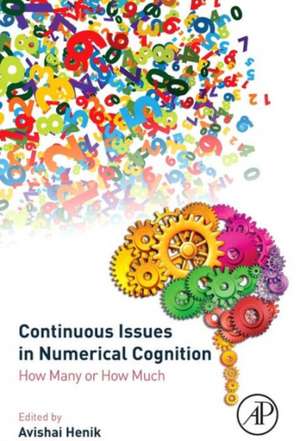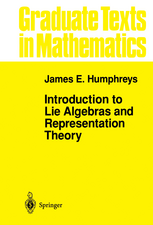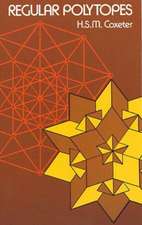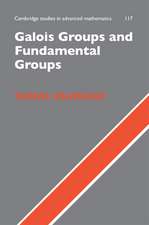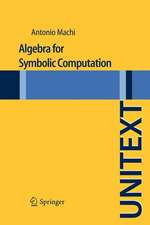Continuous Issues in Numerical Cognition: How Many or How Much
Editat de Avishai Heniken Limba Engleză Hardback – 7 iun 2016
- Serves as an innovative reference on the emerging field of numerical cognition and the branches that converge on this diverse topic
- Features chapters from leading researchers in the field
- Includes an overview of the multiple disciplines that comprise numerical cognition and discusses the measures that can be used in analysis
- Introduces novel ideas that connect non-countable continuous variables to numerical cognition
Preț: 552.11 lei
Preț vechi: 718.14 lei
-23% Nou
Puncte Express: 828
Preț estimativ în valută:
105.66€ • 109.90$ • 87.23£
105.66€ • 109.90$ • 87.23£
Carte tipărită la comandă
Livrare economică 05-19 aprilie
Preluare comenzi: 021 569.72.76
Specificații
ISBN-13: 9780128016374
ISBN-10: 012801637X
Pagini: 456
Dimensiuni: 152 x 229 x 28 mm
Greutate: 0.86 kg
Editura: ELSEVIER SCIENCE
ISBN-10: 012801637X
Pagini: 456
Dimensiuni: 152 x 229 x 28 mm
Greutate: 0.86 kg
Editura: ELSEVIER SCIENCE
Public țintă
Neuroscientists, cognitive neuroscientists, neurophysiologists, neurologists, cognitive and developmental psychologists, graduate students, and post-doctoral fellowsCuprins
SECTION I. DEVELOPMENT
1. Development of quantitative thinking across correlated dimensions
Kelly S. Mix, Susan C. Levine and Nora S. Newcombe
2. Link between numbers and spatial extent from birth to adulthood
Maria Dolores de Hevia
3. Catching math problems early: Findings from the number sense intervention project
Nancy C. Jordan and Nancy Dyson
4. Contextual sensitivity and the large number word bias: When is bigger really more?
Michèle M. Mazzocco, Jenny Yun-Chen Chan and Maria Sera
5. Learning, ageing, and the number brain
Marinella Cappelletti
6. The development of counting ability - An evolutionary computation point of view
Gali Katz, Amit Benbassat and Moshe Sipper
SECTION II. ANIMAL STUDIES
7. Number vs. continuous quantities in lower vertebrates
Christian Agrillo, Maria Elena Miletto Petrazzini and Angelo Bisazza
8. Going for more: Discrete and continuous quantity judgments by nonhuman animals
Michael J. Beran and Audrey E. Parrish
SECTION III. PROCESSES AND MECHANISMS
9. Number sense: What's in a name and why should we bother?
Bert Reynvoet, Karolien Smets and Delphine Sasanguie
10. The distribution game: evidence for discrete numerosity coding in preschool children
Alain Content and Julie Nys
11. Magnitudes in the coding of visual multitudes: Evidence from adaptation
Frank H. Durgin
12. The ordinal instinct: A neurocognitive perspective and methodological issues
Orly Rubinstein
13. Discrete and continuous presentation of quantities in science and mathematics education
Ruth Stavy and Reuven Babai
14. The interaction of numerical and non-numerical parameters in magnitude comparison tasks with children and their relation to arithmetic performance
Swiya Nath and Denes Szucs
SECTION IV. MODELS
15. Symbolic and nonsymbolic representation of number in the human parietal cortex
Moriah Sokolowski and Daniel Ansari
16. What do we measure when we measure magnitudes?
Tali Leibovich, Arava Y. Kallai and Shai Itamar
17. How do humans represent numerical and non-numerical magnitudes? Evidence for an integrated system of magnitude representation across development
Stella F. Lourenco
18. The sensory integration theory: An alternative to the approximate number system
Wim Gevers, Roi Cohen Kadosh and Titia Gebuis
1. Development of quantitative thinking across correlated dimensions
Kelly S. Mix, Susan C. Levine and Nora S. Newcombe
2. Link between numbers and spatial extent from birth to adulthood
Maria Dolores de Hevia
3. Catching math problems early: Findings from the number sense intervention project
Nancy C. Jordan and Nancy Dyson
4. Contextual sensitivity and the large number word bias: When is bigger really more?
Michèle M. Mazzocco, Jenny Yun-Chen Chan and Maria Sera
5. Learning, ageing, and the number brain
Marinella Cappelletti
6. The development of counting ability - An evolutionary computation point of view
Gali Katz, Amit Benbassat and Moshe Sipper
SECTION II. ANIMAL STUDIES
7. Number vs. continuous quantities in lower vertebrates
Christian Agrillo, Maria Elena Miletto Petrazzini and Angelo Bisazza
8. Going for more: Discrete and continuous quantity judgments by nonhuman animals
Michael J. Beran and Audrey E. Parrish
SECTION III. PROCESSES AND MECHANISMS
9. Number sense: What's in a name and why should we bother?
Bert Reynvoet, Karolien Smets and Delphine Sasanguie
10. The distribution game: evidence for discrete numerosity coding in preschool children
Alain Content and Julie Nys
11. Magnitudes in the coding of visual multitudes: Evidence from adaptation
Frank H. Durgin
12. The ordinal instinct: A neurocognitive perspective and methodological issues
Orly Rubinstein
13. Discrete and continuous presentation of quantities in science and mathematics education
Ruth Stavy and Reuven Babai
14. The interaction of numerical and non-numerical parameters in magnitude comparison tasks with children and their relation to arithmetic performance
Swiya Nath and Denes Szucs
SECTION IV. MODELS
15. Symbolic and nonsymbolic representation of number in the human parietal cortex
Moriah Sokolowski and Daniel Ansari
16. What do we measure when we measure magnitudes?
Tali Leibovich, Arava Y. Kallai and Shai Itamar
17. How do humans represent numerical and non-numerical magnitudes? Evidence for an integrated system of magnitude representation across development
Stella F. Lourenco
18. The sensory integration theory: An alternative to the approximate number system
Wim Gevers, Roi Cohen Kadosh and Titia Gebuis
